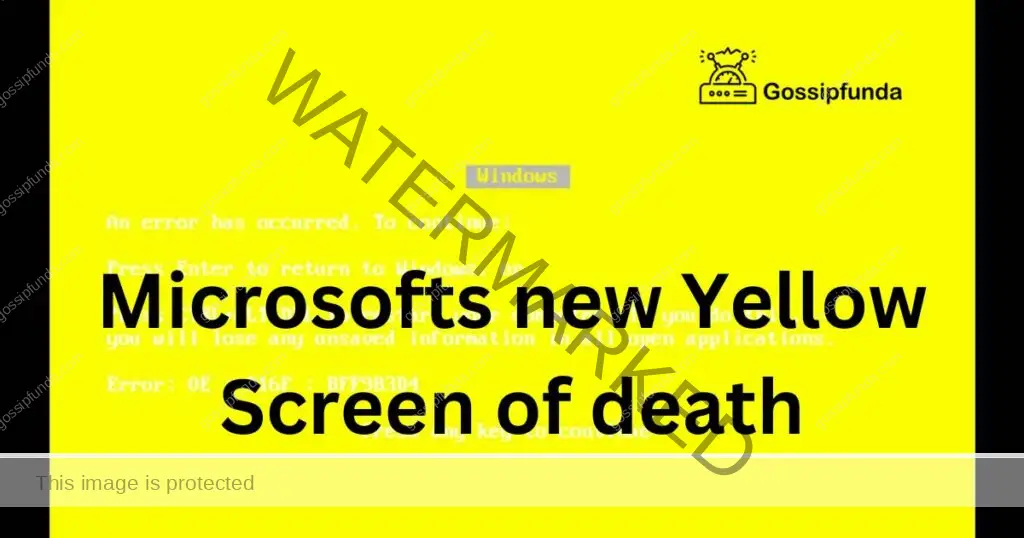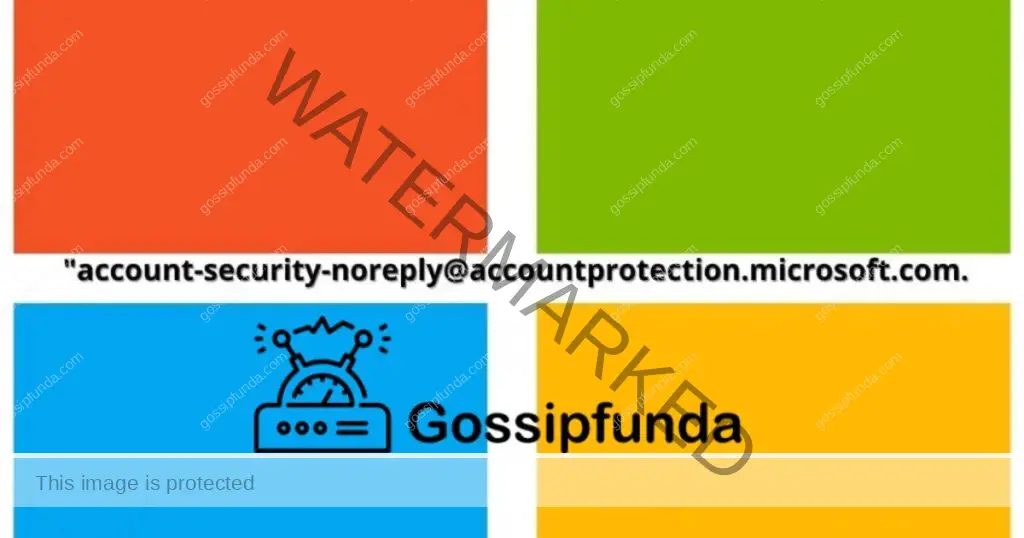In the dynamic realm of technology, surprises are frequent. Microsoft has sprung one on us. Gone are the days of the infamous blue screens heralding tech despair. In their place, a mysterious yellow hue now reigns. This isn’t a mere aesthetic switch; it’s a pivotal transformation. So, why yellow? What’s the message behind this sunlit shade? This change has left tech enthusiasts buzzing, and users, a tad bit intrigued.
Is it a sign of specific errors? Or just a brand refresh? Dive in as we unravel the mystery of Microsoft’s new Yellow Screen of Death. An adventure awaits, filled with tech insights and curious findings. Stay with us, and let’s decode this together.

A Shift from the Iconic Blue
The term “Blue Screen of Death” (BSOD) has been emblematic of Microsoft Windows for many years. Whenever the operating system encountered a critical error from which it couldn’t recover, it would display this daunting blue screen with white text. This screen, while alarming, was designed to provide diagnostic information about the problem, often including error codes that tech-savvy individuals or professionals could use to diagnose and potentially resolve the issue. The shift from this iconic blue to a new color, such as yellow, signifies more than just a visual change. It’s a departure from what users have become accustomed to.
Given Microsoft’s history of using the BSOD to convey critical system errors, the introduction of a “Yellow Screen of Death” (YSOD) would naturally raise questions. Does it represent a different class of errors? Is it linked to specific software or hardware scenarios? Such a transition marks a significant moment in the ongoing evolution of Microsoft’s operating systems.
Don’t miss: Microsoft family safety not working
The change could be seen as an effort by Microsoft to refine and categorize the error messages further, or perhaps to modernize the user experience. Whatever the reason, the shift from the iconic blue to yellow has certainly garnered attention and piqued curiosity among users and tech enthusiasts alike.
Understanding the Yellow Alert
When we talk about the “Yellow Screen of Death” or YSOD, we’re delving into a new chapter of Microsoft’s error-reporting narrative. Unlike the familiar Blue Screen of Death (BSOD), which users have come to associate with a wide variety of critical system errors, the YSOD signals something potentially different and specific.
The color yellow, in many contexts, signifies caution or warning. In the realm of technology, it could be seen as an alert to the user that while there’s an issue, it might be of a different nature than the typical fatal errors associated with the BSOD. Speculations abound, with some suggesting that the YSOD is tied to more specialized problems, such as crashes related to specific applications like ASP.NET.
Understanding this yellow alert means recognizing that Microsoft is potentially differentiating between error types. By introducing a new color, they’re hinting at a different class or category of errors, allowing users to have a more nuanced response. Instead of a broad panic that the blue screen might induce, the yellow screen might guide users towards a more targeted troubleshooting approach.
Is It Just a Theme Change?
When the Yellow Screen of Death (YSOD) was introduced, it quickly garnered attention, sparking discussions and debates among tech enthusiasts. One of the immediate questions raised was: Is this just a cosmetic or theme change by Microsoft?
Given the increasing customization options in operating systems today, it’s natural for some to assume that the shift from blue to yellow might be related to aesthetics or user personalization. Modern tech trends lean heavily on personalization, allowing users to tailor their software appearances to their preferences. Thus, a color change could easily be mistaken as just another theming option.
However, in the case of the YSOD, it’s not merely about visuals. Microsoft’s error screens, historically, have not been tied to system themes or personal customizations. Instead, they serve a vital function: to inform the user about critical system errors. The color of the screen, therefore, has significance beyond aesthetics.
What This Means for Users?
The unveiling of the Yellow Screen of Death (YSOD) certainly brings about new considerations for users. But what does this change really signify for the everyday Microsoft user?
- Enhanced Diagnostics: First and foremost, a new color for error reporting suggests a differentiation in the types of errors being encountered. The YSOD could be a way for Microsoft to provide more granular feedback about specific issues, thereby aiding users in quicker and more targeted troubleshooting.
- User Experience: Being greeted with a yellow screen instead of the traditional blue might reduce the immediate alarm users feel. Yellow, often associated with caution, might be Microsoft’s way of signaling a different level or type of concern, potentially making the error experience less daunting.
- Specialized Troubleshooting: If the YSOD is indeed tied to specific applications or scenarios (like ASP.NET crashes, as speculated by some), it can guide users more directly to specialized forums, help articles, or tech support avenues that can address that particular issue.
- Adapting to Change: Like any update or change in technology, there’s a learning curve. Users will need to familiarize themselves with what the YSOD represents and how it differs from the well-known BSOD. This means staying updated with official communications from Microsoft and seeking clarity on new developments.
- Community Collaboration: The tech community is a robust space. The introduction of the YSOD will undoubtedly spur discussions, shared experiences, and solutions across forums and tech platforms. Users can benefit from this collective knowledge, turning to the community for insights and solutions.
Resolving the YSOD
There’s no one-size-fits-all solution. Yet, being proactive helps. Ensure regular system backups. Keep software updated. And if you’re into ASP.NET development, be especially vigilant. Familiarize yourself with common crash triggers, and always test apps rigorously.
Conclusion
Microsoft’s Yellow Screen of Death is more than a color switch. It’s a nod to specialized error recognition. While the exact specifics are still under wraps, users must stay informed and prepared. After all, understanding problems is the key to swift resolutions.
FAQs
It’s a new error screen by Microsoft, different from the familiar blue one.
No, the YSOD is an addition, not a replacement for the BSOD.
It’s believed to differentiate between specific error types, offering users a clearer understanding.
No, it’s more than aesthetics. It’s tied to distinct system errors or issues.
Start by noting the error message, then consider restarting, updating software, or seeking expert advice.
Prachi Mishra is a talented Digital Marketer and Technical Content Writer with a passion for creating impactful content and optimizing it for online platforms. With a strong background in marketing and a deep understanding of SEO and digital marketing strategies, Prachi has helped several businesses increase their online visibility and drive more traffic to their websites.
As a technical content writer, Prachi has extensive experience in creating engaging and informative content for a range of industries, including technology, finance, healthcare, and more. Her ability to simplify complex concepts and present them in a clear and concise manner has made her a valuable asset to her clients.
Prachi is a self-motivated and goal-oriented professional who is committed to delivering high-quality work that exceeds her clients’ expectations. She has a keen eye for detail and is always willing to go the extra mile to ensure that her work is accurate, informative, and engaging.


